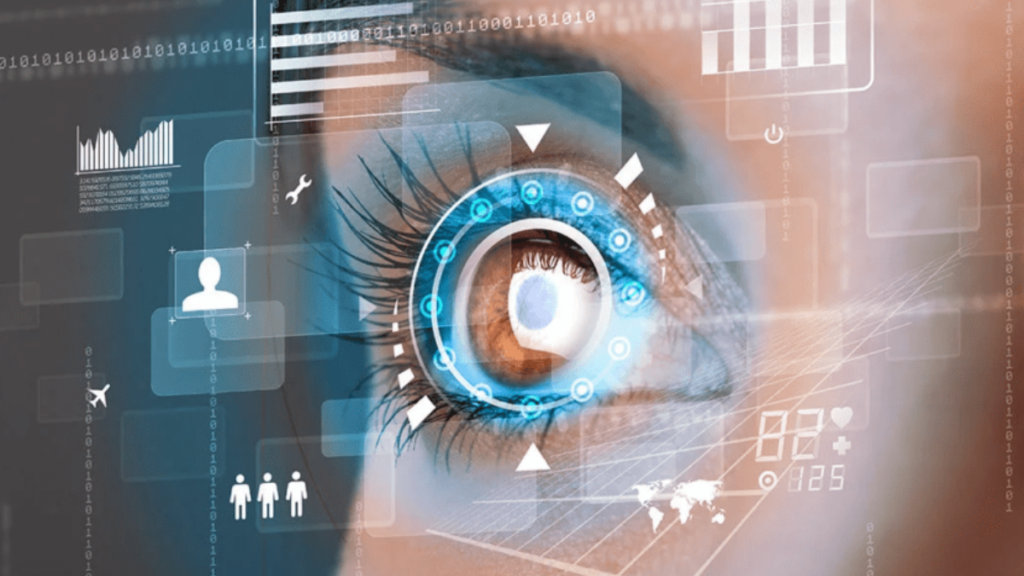Iris recognition is a biometric technology that uses the unique patterns in the human iris to provide a unique identifier for authentication and access control. The process involves capturing an individual’s iris image through a specialized camera and processing it to extract unique features and patterns. These patterns, such as furrows, crypts, and trabeculae, remain stable over time and are used in various applications such as access control, border control, immigration, time and attendance tracking, healthcare, and financial transactions. Iris recognitio’n offers advantages such as unparalleled accuracy, non-intrusiveness, resistance to forgery, and stability over time. However, challenges such as privacy concerns, potential vulnerabilities, and the cost of implementing sophisticated systems must be considered. As technology advances, iris recognitio’n is expected to play a crucial role in shaping the future of biometric security.
Understanding Iris Recognition
Iris recognition is a biometric method that involves the capture and analysis of the unique patterns present in the iris – the colored part of the eye that surrounds the pupil. The iris is known for its inherent stability and randomness, making it an ideal candidate for biometric authentication. The process begins with the acquisition of an individual’s iris image through a specialized camera. The captured image is then processed to extract the unique features and patterns, which are subsequently stored as a template for future comparisons.
How Iris Recognition Works
Iris recognition relies on the intricate patterns found in the iris, including furrows, crypts, and trabeculae. These patterns are unique to each individual and remain stable over time, even as a person ages. The technology uses near-infrared light to capture high-resolution images of the iris, as the iris’s pigments absorb this light, revealing the distinct patterns that make each iris unique.
The acquired iris image is then transformed into a mathematical template using algorithms. This template, a digital representation of the iris’s unique features, is stored securely for comparison during authentication. When a person attempts to access a secured system or facility, their iris is scanned, and the resulting image is compared to the stored template. If the patterns match within a predefined tolerance level, access is granted.
Applications of Iris Recognition
1. Access Control and Physical Security:
One of the primary applications of iris recognitio’n is in access control systems. From securing high-risk facilities to unlocking smartphones, the technology ensures only authorized individuals gain entry. Unlike traditional methods such as passwords or PINs, iris recognitio’n provides a seamless and secure means of access, reducing the risk of unauthorized entry.
2. Border Control and Immigration:
Iris recognition is increasingly being employed in border control and immigration processes. It enhances the efficiency of identity verification, expediting the entry and exit of individuals at borders. Governments around the world are leveraging this technology to strengthen border security while streamlining immigration procedures.
3. Time and Attendance Tracking:
In corporate environments, iris recognitio’n is utilized for time and attendance tracking. Employees can quickly and accurately clock in and out by simply looking into an iris recognitio’n device. This not only eliminates the need for physical cards or fingerprints but also prevents instances of buddy punching, where one employee clocks in on behalf of another.
4. Healthcare and Patient Identification:
In the healthcare sector, iris recognition plays a crucial role in patient identification. It ensures that medical records and treatments are accurately attributed to the correct individual, reducing the risk of errors and enhancing overall patient safety.
5. Financial Transactions:
The financial industry is exploring iris recognition as a secure method for authorizing transactions. By linking an individual’s iris to their financial accounts, institutions can add an extra layer of security to prevent unauthorized access and fraudulent activities.
Advantages of Iris Recognition
1. Unparalleled Accuracy:
Iris recognition boasts an exceptionally high level of accuracy compared to other biometric methods. The uniqueness and stability of iris patterns contribute to a low false acceptance rate (FAR) and a low false rejection rate (FRR), ensuring reliable authentication.
2. Non-Intrusive and Hygienic:
Unlike fingerprint or facial recognition, iris recognition is non-intrusive. Individuals do not need to make physical contact with any device, reducing concerns about hygiene and potential transmission of diseases.
3. Resistance to Forgery:
The complex and random patterns of the iris make it highly resistant to forgery or duplication. Attempts to deceive iris recognition systems with photographs or replicas are largely unsuccessful, enhancing overall security.
4. Stability Over Time:
The stability of iris patterns over an individual’s lifetime is a significant advantage. Unlike facial features that may change with age, weight loss, or other factors, the iris remains relatively constant, ensuring long-term reliability.
Challenges and Considerations
While iris recognition presents numerous advantages, it is not without its challenges. Privacy concerns, potential vulnerabilities, and the cost of implementing sophisticated iris recognition systems are some factors that must be carefully considered. Striking a balance between enhanced security and respecting individual privacy is crucial to the widespread adoption of this technology.
The Future of Iris Recognition
As technology continues to advance, the future of iris recognition holds great promise. Ongoing research aims to improve the speed and efficiency of iris recognition systems, making them more accessible for a broader range of applications. Additionally, integration with other emerging technologies, such as artificial intelligence and machine learning, could further enhance the capabilities of iris recognition, making it an indispensable tool in the realm of biometric security.
Conclusion
Iris recognition stands at the forefront of biometric security, offering a potent combination of accuracy, reliability, and non-intrusiveness. Its applications span a wide range of industries, from enhancing physical security to streamlining immigration processes and securing financial transactions. As technology evolves, iris recognition is poised to play an increasingly integral role in shaping the future of biometric authentication, providing a secure and seamless experience for individuals and organizations alike.







